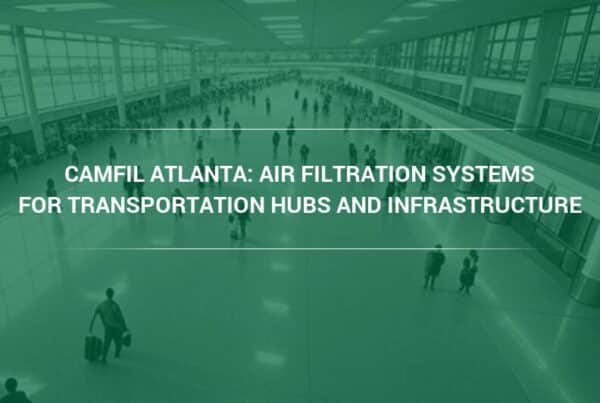Dairy processing involves highly complex steps and stages that lead to the creation of safe, consumer-ready products such as milk and milk powders, cheese, yogurt, ice cream, butter, whey protein, and infant formula. This process and these products are highly susceptible to contamination, which can create serious regulatory risks, legal risks, and health risks that can have a long-term impact on the reputation of the dairy brand.
By implementing a modern, robust air quality management solution, dairy processing companies can dramatically reduce the likelihood of contamination. Let’s take a closer look at dairy processing, the challenges and risks involved, why air quality management is important to every dairy processing facility, and key considerations when upgrading an air quality system.
Dairy Processing: A Deep Dive
Dairy processing is comprised of techniques and technology used to receive raw milk, transform it into a finished product, and store and package the product for sale in stores. Given the high risk of contamination, dairy processing facilities must adhere to strict regulations and meet high standards for air purity.
The importance of dairy processing is hardly new. In fact, the history of dairy processing goes back thousands of years to early civilizations when humans first began to domesticate animals. Although cows, goats, sheep, and other animals were first kept for meat and skin, humans soon discovered their milk and likely preserved milk through fermentation.
Innovations during and after the Industrial Revolution, such as pasteurization, mechanical processing equipment, and refrigeration, dramatically improved the efficiency and hygiene of dairy processing. In the late 19th and 20th centuries, standards were introduced for dairy processing and mass production of dairy products. Automation, robotics, and new types of packaging would continue to improve safety, operational efficiency, and product consistency.
Progress in dairy processing has had a significant impact on the global economy as the dairy market was valued at $893 billion U.S. in 2021. Millions of people around the world work in the dairy industry, which plays a major role in global health, nutrition, and child development, as well as humanitarian efforts to fight hunger.
The Role of Air Quality in Dairy Processing
Even in ancient times, dairy processors recognized the need for clean air by simply opening windows and doors. Mechanical ventilation solutions were introduced during the Industrial Revolution, while sanitary practices and air quality management became more advanced in the 20th century. For example, high-efficiency particulate air (HEPA) filters were gradually introduced to industrial and commercial concerns after World War II.
While air quality is essential to product quality throughout the food and beverage industry, this is especially true in dairy processing. Airborne contaminants in processing and storage can reduce shelf life and lead to spoilage and potentially dangerous health risks.
Because dairy products tend to absorb odors and flavors from the environment, maintaining pure, clean air is critical to preserving the intended taste and aroma of each dairy product. Contamination can also affect the texture and appearance of some dairy products, which can affect the customer experience.
Dairy processing facilities, as well as storage and packaging facilities, must invest in modern air quality control solutions to prevent the downstream effects of contamination.
Potential Contaminants in Dairy Production
Now that we know the impact of contaminants, let’s look at the contaminants themselves. The first group of contaminants is microbial, including:
- Bacteria such as salmonella, E. coli, Enterobacter sakazakii (now called Cronobacter sakazakiiand), and listeria, all of which can affect the safety of dairy products and cause illness
- Molds and wild yeasts, which can affect flavor and odor and cause dairy products to spoil.
- Microbial clouds from humans.
The second group of contaminants includes dust and other particulate matter, which can settle on the products themselves and dairy processing equipment if air quality is not properly managed.
The third group of contaminants are odors and volatile organic compounds (VOCs). For example, lactic acid is a natural byproduct of fermentation and can contribute to a sour smell, while lipid oxidation during the processing of high-fat dairy products can produce VOCs.
To eliminate or minimize the potential for contamination, dairy processing facilities should have air filtration and ventilation systems that ensure pure, filtered air in the receiving, processing, and packaging environments. Because the average size of microbial contaminants is 0.6 microns, even the smallest gaps must be secured to prevent impure air from coming in contact with products.
In addition to air filtration and ventilation, proper cleaning procedures are needed to prevent the growth and spread of contaminants, not only on surfaces but from cleaning products themselves. For example, peracetic acid (PAA) is a strong oxidant and virucide that can contaminate dairy processing facilities and cause serious health issues when used incorrectly.
Key Stages in Dairy Processing
Although there are various processes, techniques, and technology involved with the processing of different dairy products, there are five key stages to dairy processing that require the highest level of air control management.
- Raw milk reception: The initial collection of raw milk from dairy farms and transportation to the dairy processing facility is followed by comprehensive quality analysis, including visual inspection, odor and temperature assessment, and testing for contaminants.
- Pasteurization: Prior to the first pasteurization implementation in 1862, bacteria in milk commonly caused tuberculosis and a variety of fevers and infections. Today, pasteurization is required for all milk or milk-based products with few exceptions. Pasteurization involves heating milk to kill harmful bacteria while preserving healthy nutrients. Common techniques include high-temperature short-time (HTST), ultra-high-temperature, and batch pasteurization.
- Homogenization: Over time, fat globules that occur naturally in milk will rise to the surface and create a cream layer. Homogenization breaks down these fat globules into smaller sizes. This process prevents cream separation, allows for consistent fat distribution, improves texture and flavor, and can extend shelf life by stabilizing milk emulsion.
- Separation: The centrifugation process separates milk into cream and skim milk. Cream is used to make butter, while skim milk proceeds with additional processing before being used to make additional products.
- Further processing: Multiple techniques are used depending on the desired product. For example, cream is blended back into skim milk to achieve the necessary fat content to make whole milk. Fermentation involves adding certain types of bacteria cultures to milk to create yogurt and certain types of cheese, while enzymes or acid are added to milk through coagulation to form the curds and whey used to make cheese. Some cheeses are aged to create deeper flavor and texture.
Air Filtration Solutions: A Critical Review
Choosing the right air filter is critical to meeting regulatory requirements and maintaining a safe environment in dairy processing plants. Criteria for choosing air filters is driven by many factors, including but not limited to:
- Air quality requirements
- Airflow requirements
- Contaminants and particles
- Compatibility with existing HVAC and air purification systems
- Rating systems, including:
- MERV (Minimum Efficiency Reporting Value): Uses a rating scale of 1 (largest particles) to 16 (smallest particles) to determine a filter’s ability to capture particles of various sizes.
- ISO16890: Uses a performance rating system based on particulate matter size classifications of PM1, PM2.5, and PM10.
- HEPA (High-Efficiency Particulate Air): A type of filter tested and certified to a minimum efficiency level of 99.97% on 0.3-micron-sized particles. The high pressure drop of this filter requires specialized frames and gaskets, but this level of air filtration is crucial in certain dairy processes
- ULPA (Ultra-Low Penetration Air): ULPA filters can be 99.9995% efficient for use in environments that require exceptionally clean air.
Be sure to ask your HVAC and air filtration provider about the latest technologies available. For example:
- Modern HEPA filters have been enhanced to capture smaller and smaller particles, such as viruses, bacteria, and allergens with lower pressure drops, making these filters ideal for dairy processing plants.
- Activated carbon filters offer superior adsorption of odors, gases, and VOCs.
- Ultraviolet technology is used in HVAC systems to kill airborne pathogens and break down VOCs.
Case Study: Dairy Processing Plan Benefits from Better Performance, Extended Life, and Lower Costs
When one of the top five dairy processors in North America needed to evaluate and upgrade its air filtration systems, they turned to Camfil to complete the analysis and recommend options. To overcome air quality management challenges in production areas, Camfil recommended a combination of filter types to maximize performance in two types of air handling units.
Ongoing filter changes, pressure drop calculations, and analysis of captured contaminants revealed that the filter upgrades resulted in fewer filter changes, more contaminants captured, reduced wear and tear on final filters and coils, and a significant reduction in the total cost of ownership. Read the full case study.
Proactive Air Quality Management
The best way to maximize ROI from your air quality management investments, enhance performance, boost the life of your system, and satisfy compliance requirements is through proactive inspections and maintenance. These activities should be managed and documented by a qualified technician and analyzed to maintain optimal performance and cost-efficiency.
Air filters and filtration technology should be inspected for damage, debris, and sealing. Check ventilation systems for pooling water, which can be a breeding ground for microbial contaminants. Replacement of filters at the appropriate time and cleaning of equipment will prevent the buildup of particles that contaminate dairy processing plants and impede airflow.
Conclusion and Future Outlook
Many of us have likely experienced contaminated dairy products on some level, whether that involves observing what happens to exposed cheese or milk that spoils prematurely. Ensuring safe, healthy dairy products begins when raw milk is brought to the dairy processing plant and continues right up until the point of packaging the final product for sale or delivery. Proper air quality management is essential to meeting the strict requirements of government and industry regulations.
Expect new processing technologies to improve operational efficiency and product quality, and to support the production of plant-based dairy alternatives. Similarly, consumers will continue demanding more transparency into where and how dairy products are made and what ingredients are used. Sustainability is likely to be a top priority as processors and consumers seek to reduce energy consumption, emissions, and the use of natural resources.
If you’d like to have the air filtration and HVAC systems at your dairy processing facility inspected and assessed, please contact Camfil today to schedule a consultation. We’ll provide a thorough analysis and review of your systems, identify areas of concern and opportunities for improvement, and make recommendations to improve air quality management and reduce risk.



